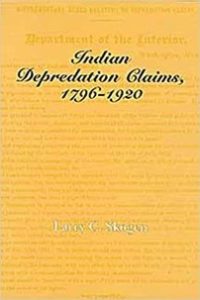- USAF Academy Department of History
Indian Depredation Claims, 1796-1920
by Larry C. Skogen
Beginning in the seventeenth century, with the colonization of the Americas, European immigrants and American Indians encountered each other’s views on the rights and responsibilities of ownership. Disputes arose as a natural result of the meeting of two cultures, and occasionally these developed into sanguinary conflicts. In 1796 the United States Congress created the depredation claims system to compensate Indians and settlers alike for the loss of property and thereby preserve peace on the frontiers.
By presenting the lives of non-Indian people who filed for relief from depredations and the legal and political systems under which they filed claims, Larry Skogen accentuates the distinction between the lofty ideals and the penurious, tedious reality of the claims system. Because the young nation could not afford to pay for every stolen cow or burned farmhouse, rules and policies were imposed on the system to protect the treasury, but they slowed the claims process and turned away legitimate claimants empty-handed. In addition the system, seldom used by Indians, became a target of unscrupulous settlers, who filed fraudulent claims and sometimes, because they had political connections, received compensation for losses never incurred. When the system did provide indemnities, Indian nations paid for the actions of their miscreants of whom they disapproved, or, as much more often happened, the U.S. government used monies from the general treasury to pay lawyers and administrators of the estates of long-dead claimants.

